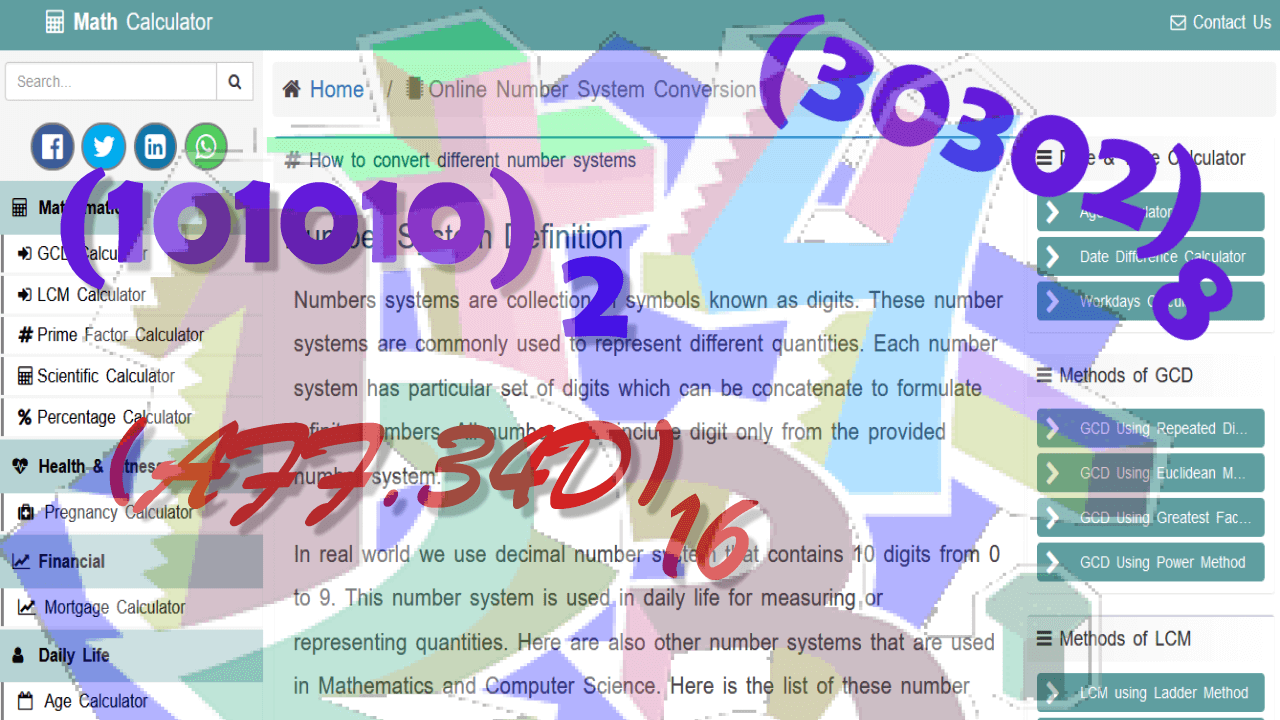Number System Definition
Numbers systems are collection of symbols known as digits. These number systems are commonly used to represent different quantities. Each number system has particular set of digits which can be concatenate to formulate infinite numbers. All number must include digit only from the provided number system.
In real world we use decimal number system that contains 10 digits from 0 to 9. This number system is used in daily life for measuring or representing quantities. Here are also other number systems that are used in Mathematics and Computer Science. Here is the list of these number systems.
- Decimal
- Hexadecimal
- Binary
- Octal

Uses of Number Systems
Each above said number systems is used in particular condition. Such as decimal is used in real life, octal and hexadecimal is used in addressing and binary number system is used in computation. Alternatively these number systems can be converted in each other to achieve specific goal.
| Sr. | Number System | Implementation |
|---|---|---|
| 1 | Decimal | Used in routine life for measuring different parameter. |
| 2 | Octal | This number system is used for representation of color code and setting of permission in different operating systems. |
| 3 | Hexadecimal | Hexadecimal number system is most commonly used in memory addressing in primary and secondary storage devices. |
| 4 | Binary | It is the base of all electronic computations and manipulations. All computer and other computerized devices used binary number system for the manipulation of data and instructions. |
Number System Conversion
All provided number system has specified base or radix and these number systems can be converted vice versa. Here we have a list of possible conversions. These conversion can be done using decimal number system as intermediate or directly using shortcut method. This shortcut method involve binary counting table
- Binary To Decimal Using weighted method
- Binary To Octal Using binary counting
- Decimal To Binary Using repeated division by 2
- Binary To Hexadecimal Using binary Counting
- Octal To Binary Using shortcut method
- Hexadecimal To Binary Using binary method
- Decimal To Octal Using repeated division by 8
- Hexadecimal To Octal Using binary counting method
- Octal To Hexadecimal Using Shortcut Method
- Decimal To Hexadecimal Using repeated division method
- Hexadecimal To Decimal Using weighted method of base 16
- Octal To Decimal Using weighted method of base 8
Numbers System Base Table
Base is relevant to the total no of digits a particular number system have. Here is the detail of base and digits.
| Sr. | Number System | Base | Digits |
|---|---|---|---|
| 1 | Decimal | 10 | 0,1,2,3,4,5,6,7,8,9,10 |
| 2 | Octal | 8 | 0,1,2,3,4,5,6,7 |
| 3 | Hexadecimal | 16 | 0,1,2,3,4,5,6,7,8,9,A,B,C,D,E,F |
| 4 | Binary | 2 | 0,1 |
Fractional Number system conversion
Fractional numbers may belong to any of the above said number systems. These number has decimal point means some digits may appear after the dot operator. Dot operator is used to separate integer and fraction part of these numbers. In Online Mathematical Calculator OMC conversion of all these numbers that have fractional part is possible.